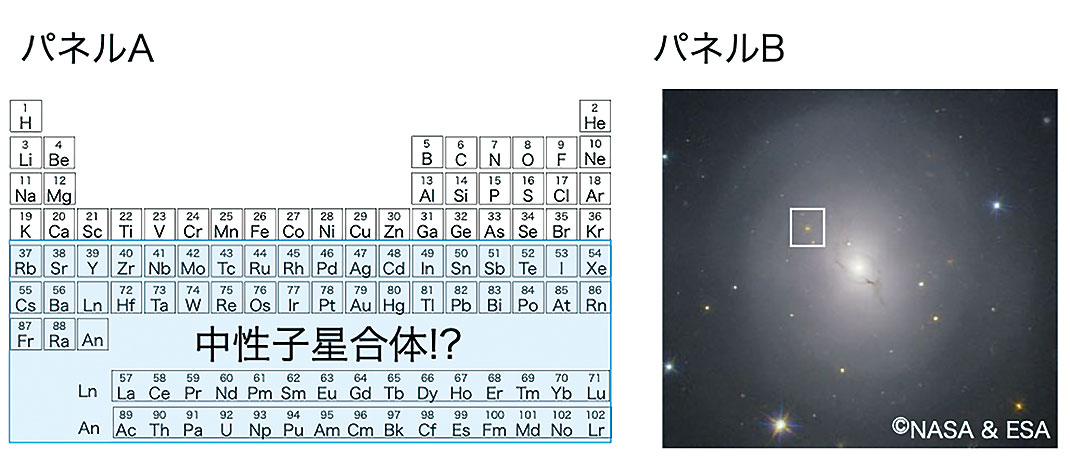Disclaimer: machine translated by DeepL which may contain errors.
Alchemy of the Universe
Kenta Furusaka (Associate Professor, Research Center for the Early Universe)
When you hear the word "alchemy", you may think that a mysterious story is about to begin. Do not underestimate it. Alchemy has captivated famous scientists in the past, including Newton, and astrophysicists are now fascinated with the alchemy of stars. Among the 100 or so elements that exist on earth, the origin of gold, platinum, etc., so to speak, where is the alchemist of the universe? The mystery that scientists have been pursuing is about to be solved.
We know that a few minutes after the beginning of the universe, everywhere we looked, there was 75% hydrogen and 25% helium. It is a long way from here to the formation of gold. In order to produce heavy elements, it is necessary to gradually fatten them by attaching neutrons to their nuclei, which do not feel any electrical repulsive force. For example, gold has an atomic number of 79 and requires the adsorption of roughly 200 neutrons on hydrogen (Figure Panel A). However, considering that neutrons decay to protons in an average of 15 minutes, the heavy element must be produced all at once in a time shorter than 15 minutes. So where in the universe did such a nuclear reaction take place? Half a century ago, G. Gamow, the proponent of the Big Bang universe, claimed that gold was created in the Big Bang, while his biggest rival, F. Hoyle, claimed it was a supernova explosion. The former proved to be theoretically difficult at an early stage. The latter, too, is an accepted, if not completely ruled out, negative view among experts. In other words, special circumstances are required to fly fragments of a neutron-rich star such as a neutron star. This is where neutron star mergers come in.
 |
||||
| Panel A: Periodic table. Elements thought to have been produced in the neutron star merger are shown in the frame. Panel B: Visible light image of the kilonova associated with the first neutron star merger (images courtesy of NASA and ESA) |
||||
According to Einstein's theory of relativity, neutron star binary stars contract their orbits by radiating gravitational waves, and release enormous amounts of orbital energy as gravitational waves just before merging. Large-scale gravitational wave interferometers such as LIGO in the U.S., Virgo in Europe, and KAGRA in Japan are designed to detect these gravitational waves. More interestingly, neutron star mergers release not only gravitational waves. A large amount of neutron-rich material should be released, in which heavy elements should be produced (Figure Panel A).
The first gravitational waves from a neutron star merger were captured on August 17, 2017. From here, relay observations will begin. First, the baton was passed to the gamma-ray satellite, which discovered gamma rays about 2 seconds after the merger. From there, the baton was passed successively to the visible light telescope, the near-infrared telescope, the X-ray satellite, and the radio interferometer, with great success in the discovery of electromagnetic wave-compatible objects at almost all wavelengths that could be observed. Figure Panel B shows a visible light image of a sudden event discovered about half a day after the merger. This phenomenon, called kilonova, was predicted as a phenomenon in which heavy elements created by the merger would shine (the author was one of the researchers involved in this prediction). The observed kilonova peaked at a half-day and darkened within a week or so, with a rapid color change from blue to red. The nature of the light suggests that, roughly speaking, all elements heavier than per-strontium were produced in this neutron star merger (Figure Panel A). Thus, heavy elements such as gold present on the ground may have been formed from fragments of neutron star mergers. In any case, as more neutron star mergers are discovered in the future, more details will be revealed soon. The Research Center for the Early Universe conducts a wide range of research on gravitational wave astrophysics such as this one.
Published in Faculty of Science News July 2021


